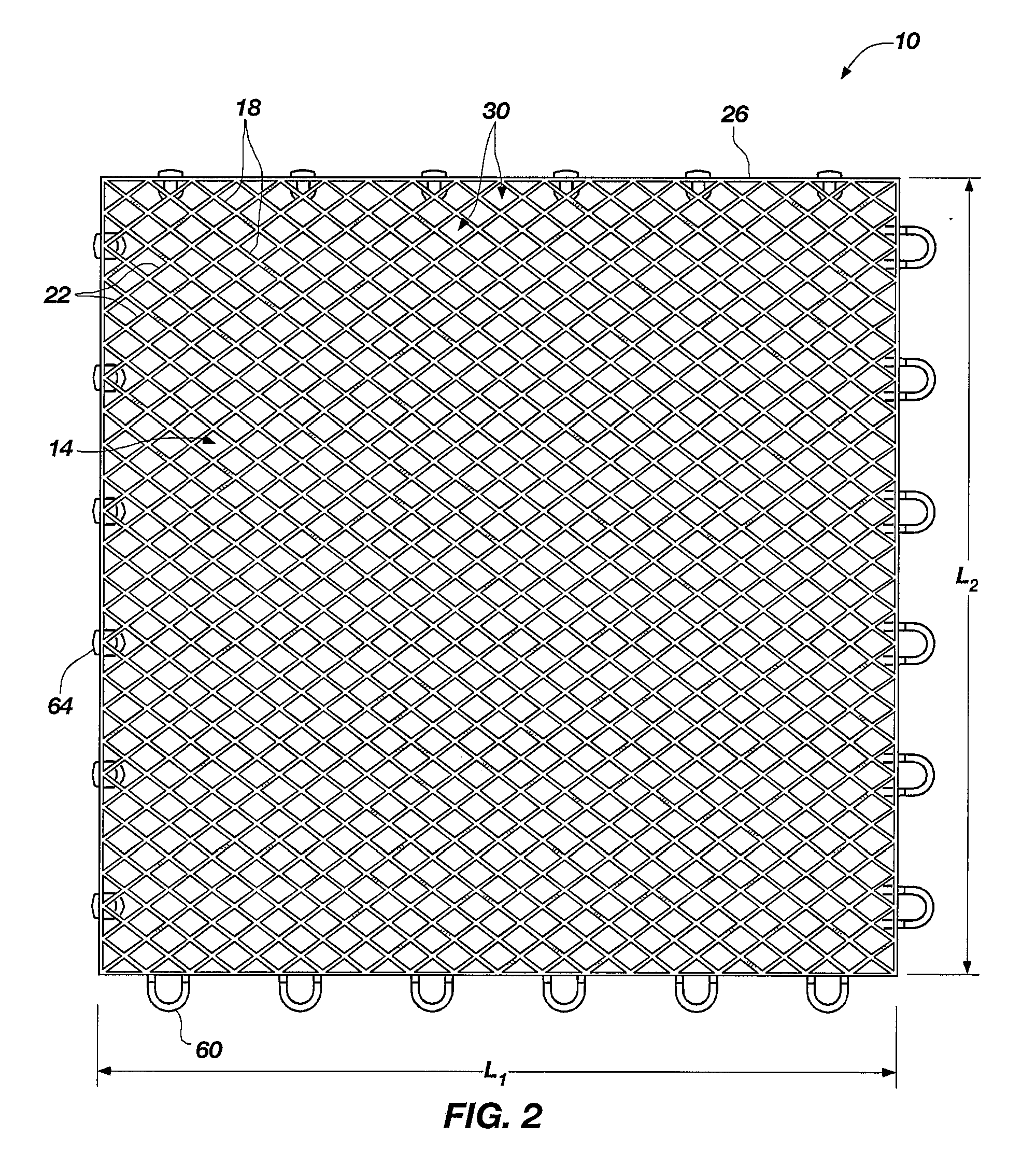Modular synthetic floor tile configured for enhanced performance
a synthetic floor tile and module technology, applied in the field of synthetic floor tiles, can solve the problems of increasing the abrasiveness of the contact surface, reducing traction, and increasing the likelihood of injury, so as to reduce the abrasiveness of the floor tile, soften the interface, and reduce the abrasiveness
- Summary
- Abstract
- Description
- Claims
- Application Information
AI Technical Summary
Benefits of technology
Problems solved by technology
Method used
Image
Examples
example
[0126]FIGS. 19 and 20 illustrate the results of a coefficient of friction test and an abrasiveness test performed by an independent testing agency on the above-identified PowerGame floor tile from Connor Sport Court International, Inc. as it currently exits and as illustrated in FIGS. 8-13, as compared with the results from the same tests performed on several other popular floor tiles existing in the marketplace, shown as floor tiles A-F.
[0127] With reference to FIG. 19, and in accordance with ASTM C1028-06, the standard test method for determining the static coefficient of friction of ceramic tile and other like surfaces by the horizontal dynamometer pull-meter method, it can be seen that the PowerGame floor tile scored a higher coefficient of friction index than any of the other tested floor tiles A-F.
[0128] With reference to FIG. 20, and in accordance with ASTM F1015-03, the standard test method for relative abrasiveness of synthetic turf playing surfaces, it can be seen that t...
PUM
| Property | Measurement | Unit |
|---|---|---|
| obtuse angle | aaaaa | aaaaa |
| obtuse angle | aaaaa | aaaaa |
| acute angle | aaaaa | aaaaa |
Abstract
Description
Claims
Application Information
 Login to view more
Login to view more - R&D Engineer
- R&D Manager
- IP Professional
- Industry Leading Data Capabilities
- Powerful AI technology
- Patent DNA Extraction
Browse by: Latest US Patents, China's latest patents, Technical Efficacy Thesaurus, Application Domain, Technology Topic.
© 2024 PatSnap. All rights reserved.Legal|Privacy policy|Modern Slavery Act Transparency Statement|Sitemap



